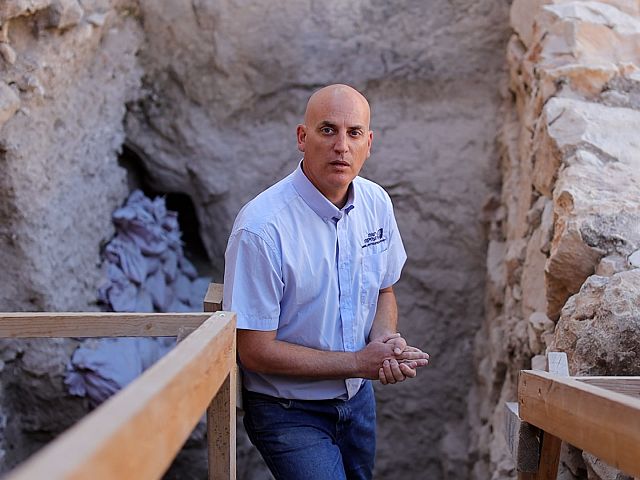Photo: Israel Antiquities Authority
Archaeologists from the Israel Antiquities Authority and Tel Aviv University, conducting excavations in the City of David in Jerusalem, have discovered a fortification moat. The moat is nine meters deep, 30 meters wide, and 70 meters long. Attempts to locate this moat have been ongoing for the past 150 years.
The Moat’s Role in Defending Jerusalem
This moat divided Jerusalem into two parts, separating the densely populated lower city from the upper city, where the Temple and palaces were located. The organization of such a monumental project could only have been undertaken by a powerful ruler. The land on both sides of the fortification dropped sharply, making it impossible to bypass the moat.
Historical Significance of the Moat
“We don’t know exactly when the moat was carved, but it is clear that it was used for hundreds of years during the period when Jerusalem was the capital of the Kingdom of Judah. King Josiah carried out this project to separate the residential lower city, located to the south, from the acropolis, which is on the Temple Mount to the north,” say the excavation leaders, Professor Yuval Gadot of Tel Aviv University and Dr. Yiftah Shalev of the Israel Antiquities Authority.
Long-term Searches and Discovery
For 150 years, archaeologists have been trying to determine what the fortifications on the northern side of the city looked like, but the picture has only now become clear. Scientists explain that in the 1960s, British archaeologist Kathleen Kenyon, who conducted excavations in the City of David, noticed that the mountain in this place dropped off, although it should have risen. She concluded that it was a natural ravine, but it has now been revealed to be a wide and deep moat.
Use of the Moat in Different Eras
“We don’t know when it was carved. Usually, such monumental construction projects in Jerusalem are dated to the Middle Bronze Age—about 3,800 years ago. In this case, it protected the city from the north, the only place without natural defenses. It was also used during the First Temple period and the Kingdom of Judah, serving as a barrier between the lower and upper cities,” says Yiftah Shalev.
Ancient Topography of Jerusalem
Ancient Jerusalem arose on a narrow and steep hill, gradually spreading to neighboring hills and valleys. The topography made movement from one part of the city to another difficult, and many of the kings’ construction projects were related to this, as reflected in the Tanakh. According to the First Book of Kings, “Solomon, building the Millo, closed the gap in the wall of the city of David, his father.” The division of the city into upper and lower parts persisted through the Persian and Hellenistic periods.
Source: newsru

















